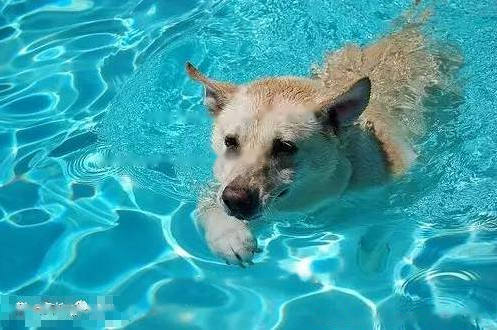
Dogs are very heat-labile:
Because dogs don't sweat and don't stop moving because of heat; dogs' bodies can't regulate their own temperature, and dogs don't Do not take care of yourself and replenish water in time; the sweat glands of dogs are all on the tongue, so seeing the dog sticking out its tongue and panting indicates that the dog is very hot and needs to drink water to cool down or stop moving; dogs with short noses are more afraid of heat than dogs with long noses. It is more difficult to dissipate heat.
The normal body temperature of a dog should be between 37.8 degrees and 39 degrees. When the body temperature reaches 40.65 degrees, the internal organs begin to be damaged. When the body temperature reaches 41°C or more, it is highly dangerous. In a high-heat environment or a high-humidity and hot climate, the dog's body system may collapse and die as soon as 20 minutes, so heat stroke is the biggest threat to the dog's health in summer or other hot weather conditions.
Dog symptoms of heat stroke:
Panting with mouth open, murmur in lungs, mouth Spitting; body swaying out of balance when walking; weakness; confusion; eventually falling to the ground, death.
When a dog develops symptoms of heat stroke, the owner should immediately take self-help instead of waiting for the veterinarian blindly. The most important thing is to cool down the dog's body temperature as soon as possible by showering it on the dog's body with cold water (do not use ice water, which will slow down the circulation of the skin and prolong the cooling time). Put the dog in a cold tub to cool down. The dog should then be taken to the veterinary clinic as quickly as possible. Dogs generally don't drink water on their own under these conditions, so take them to the veterinarian for quick hydration and other treatments by drip and other means.
Treatment of heat stroke in dogs:
Summer is coming soon, and the pets in the house may be dogs, cats or Rabbits have traces of heatstroke. When your pet is panting, restless, and barking, there are already signs of heat stroke. Then there will be difficulty breathing, head up and neck breathing, or sluggishness. If proper treatment is not taken at this time, the pet will go into shock, coma, and finally die.
There are several ways to prevent heat stroke in dogs:
【Residential Environment】: Place pets in a place with good ventilation and avoid sun exposure, if necessary. blow a fan or install an air conditioner in the room from time to time.
【Life Management】: Long-haired pets can shave their hair to help dissipate heat and add enough water at any time.
【Outdoor Activities】: Avoid taking pets out when the temperature is high. If you want to go out, you must bring drinking water and reduce the amount of exercise.
【Increase alertness】: Always pay attention to whether pets have abnormal behaviors or symptoms, especially short-nosed cats or dogs, and obese animals are prone to heat stroke.
To judge whether a pet has heat stroke, in addition to judging by the pet's external behavior and reaction, the owner can also use touch or observation. For example, whether the pet is in a sultry and high temperature environment, whether the body temperature is much higher than usual, or whether the skin has flushing, extensive bleeding spots, bleeding spots, etc. from the hairless part of the pet's abdomen, these are all signs of possible heat stroke.
When the pet has symptoms of heat stroke, the first step for the owner is to untie the collar and the items hanging on the pet. If the pet only suffers from mild heatstroke such as drooling, wheezing, and restlessness, you can lower the ambient temperature first, such as moving the pet to a shaded place, or blowing an electric fan to cool it down, and then giving it an appropriate amount of water to recover slowly. . If you have difficulty breathing and appear sluggish, you should wet your pet's body with cold water or submerge it in water, and then send it to a doctor for emergency treatment.
When the pet has suffered from severe heatstroke, shock, and coma, first wet the pet with ice water or wrap the body with an ice towel, or wipe it with alcohol to cool down, or pour cold water from the anus into the rectum, and then send it to the doctor as soon as possible. On the way to the hospital, keep the pet's head down and neck straight, keep the airway open and prevent vomiting.
![[Dog Training 5] The training method of pet dog dining etiquette](/static/img/12192/12192_1.jpg)




